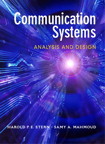ISCS 2013: Interdisciplinary Symposium on Complex Systems (Emergence, Complexity and Computation)
暫譯: ISCS 2013:複雜系統跨學科研討會(出現性、複雜性與計算)
- 出版商: Springer
- 出版日期: 2014-02-26
- 售價: $4,510
- 貴賓價: 9.5 折 $4,285
- 語言: 英文
- 頁數: 400
- 裝訂: Hardcover
- ISBN: 3642454372
- ISBN-13: 9783642454370
海外代購書籍(需單獨結帳)
商品描述
The book you hold in your hands is the outcome of the "ISCS 2013: Interdisciplinary Symposium on Complex Systems" held at the historical capital of Bohemia as a continuation of our series of symposia in the science of complex systems. Prague, one of the most beautiful European cities, has its own beautiful genius loci. Here, a great number of important discoveries were made and many important scientists spent fruitful and creative years to leave unforgettable traces. The perhaps most significant period was the time of Rudolf II who was a great supporter of the art and the science and attracted a great number of prominent minds to Prague. This trend would continue. Tycho Brahe, Niels Henrik Abel, Johannes Kepler, Bernard Bolzano, August Cauchy Christian Doppler, Ernst Mach, Albert Einstein and many others followed developing fundamental mathematical and physical theories or expanding them. Thus in the beginning of the 17th century, Kepler formulated here the first two of his three laws of planetary motion on the basis of Tycho Brahe’s observations. In the 19th century, nowhere differentiable continuous functions (of a fractal character) were constructed here by Bolzano along with a treatise on infinite sets, titled “Paradoxes of Infinity” (1851). Weierstrass would later publish a similar function in 1872. In 1842, Doppler as a professor of mathematics at the Technical University of Prague here first lectured about a physical effect to bear his name later. And the epoch-making physicist Albert Einstein – while being a chaired professor of theoretical physics at the German University of Prague – arrived at the decisive steps of his later finished theory of general relativity during the years 1911–1912. In Prague, also many famous philosophers and writers accomplished their works; for instance, playwright arel ape coined the word "robot" in Prague (“robot” comes from the Czech word “robota” which means “forced labor”).
商品描述(中文翻譯)
您手中所持的這本書是「ISCS 2013:跨學科複雜系統研討會」的成果,該研討會在波希米亞的歷史首都舉行,作為我們在複雜系統科學系列研討會的延續。布拉格,這座最美麗的歐洲城市之一,擁有其獨特的美麗地靈。在這裡,許多重要的發現被提出,許多重要的科學家在此度過了富有成效和創造性的歲月,留下了難以忘懷的痕跡。或許最重要的時期是魯道夫二世的時代,他是藝術和科學的偉大支持者,吸引了眾多傑出的人才來到布拉格。這一趨勢持續下去。第谷·布拉赫、尼爾斯·亨利克·阿貝爾、約翰內斯·開普勒、伯納德·博爾札諾、奧古斯特·柯西、克里斯蒂安·多普勒、恩斯特·馬赫、阿爾伯特·愛因斯坦等人相繼在此發展或擴展基本的數學和物理理論。因此,在17世紀初,開普勒根據第谷·布拉赫的觀測在此提出了他的三個行星運動定律中的前兩條。在19世紀,博爾札諾在此構造了無處可微的連續函數(具有分形特徵),並撰寫了一篇關於無限集合的論文,標題為《無限的悖論》(1851年)。魏爾斯特拉斯在1872年發表了類似的函數。1842年,作為布拉格工業大學的數學教授,多普勒首次在此講授了一種後來以他名字命名的物理效應。而開創性物理學家阿爾伯特·愛因斯坦在德國布拉格大學擔任理論物理學的教授期間,於1911年至1912年間達到了他後來完成的廣義相對論的關鍵步驟。在布拉格,許多著名的哲學家和作家也完成了他們的作品;例如,劇作家卡雷爾·查佩克在布拉格創造了「機器人」這個詞(「robot」來自捷克語「robota」,意為「強迫勞動」)。




















